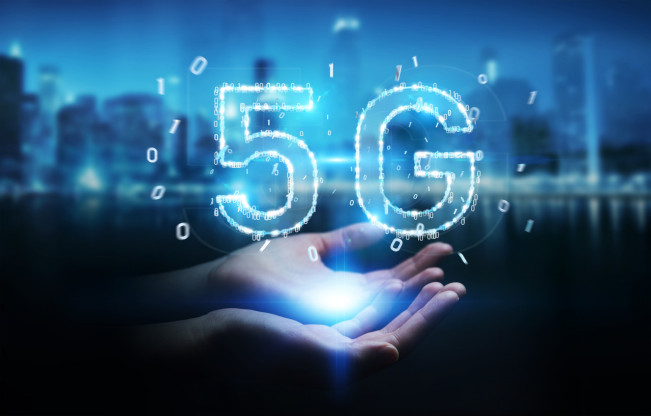Apply 5G to the Industrial Internet of Things

So why is the Internet of Things considered so suitable for
5G, especially for industrial applications? Which applications might be the
most important? What other challenges need to be overcome?
When considering which market segment will generate
substantial 5G revenue first, the Industrial Internet of Things (IIoT) is
closely followed, second only to consumer devices. So why is the Internet of
Things considered so suitable for 5G, especially for industrial applications?
Which applications may be the most important? What are the challenges that need
to be overcome?
To answer these questions, let us first define IIoT and take
a closer look at what it means in practice. Broadly speaking, the Internet of
Things can refer to anything connected to the Internet, not mobile phones,
tablets, or computers. For the Industrial Internet of Things, we will reduce it
to equipment in factories, process industries, or other industrial
environments.
This is still a fairly broad definition of the Industrial
Internet of Things. To understand the use of 5G, we need to be more specific.
In the IIoT market segment, we can see that important use cases for 5G will
include condition monitoring, robotics, augmented reality/virtual reality, and
process control.

In a recent survey conducted by Molex and research company
Dimension Research, we asked respondents what they think are the most likely
"killer applications" or main use cases of 5G in the industrial and
IoT markets. Robots are the most popular answer, with 45% of respondents giving
the answer. However, in addition, for other possible applications (at least 30%
of the survey participants mentioned these applications), including logistics,
factory automation, process control and smart grid, the answer is also very
broad.
Due to the timing of the 5G rollout, condition monitoring
and robots are likely to be the "gateway" that opens the way to
increase future spending. Condition monitoring and its application in
predictive maintenance is an application example that can easily quantify the
economic benefits of the Internet of Things, which allows manufacturers to more
directly prove the rationality of the Internet of Things. Robots can stimulate
investment by requiring dedicated 5G wireless infrastructure, as existing wired
connections cannot achieve the mobility required for applications such as
networking and autonomous factory robots.
Industrial 5G
We have studied some applications, but we have not yet
solved the question of why 5G might be so useful in IIoT applications.
Compared with 4G and 3G, 5G discussions usually focus on the
increase in bandwidth, providing faster data rates of up to 10Gbps, and the
ability to support more devices from a base station. In an industrial
environment, this may be useful for applications such as remotely diagnosing
equipment problems with augmented reality technicians.
By implementing artificial intelligence locally near or near
IoT devices, monitoring sensor data, and sending data over the network only
when problems are discovered or actions are required, the required bandwidth
can be reduced.
In many industrial use cases, low latency is also important.
In an ideal situation, the time between sending and receiving a 5G signal may
be as low as 1 millisecond, while 4G is about 200 milliseconds. This is
essential for process control, as 5G is used to control devices in real time,
as well as mobile factory robots used to send and receive data across the
network. For example, a pick-and-place robot might use cameras and other
sensors to scan shelves, and then send the raw data to the network, where the
algorithm processes and forwards instructions to the robot—everything is done
in the blink of an eye.
Another benefit of 5G is energy efficiency. The 5G standard
includes a number of features to reduce power consumption, such as the
widespread use of sleep mode when there is little or no data transmission. In
terms of watts per bit of data, 5G is 90% more efficient than 4G networks. For
battery-powered IoT devices, this will have a great impact on the running time
of the device between two charges.
Although the 5G network provided by large operators will be
the best choice in some cases, for many industrial applications, a better
choice is a dedicated network, where separate devices and data transmissions
are created specifically for specific locations and implementations. 5G
network. This means that the network can be customized according to the
company's specific needs and ensure security and service levels.
Frequency is important
Another technical area to consider is the frequency bands
used by 5G. Going back to high school physics, you may remember that higher
frequencies can carry more data. Therefore, 5G can use the millimeter wave
(mmWave) frequency band above 6 GHz to achieve its high bandwidth.
However, these high frequencies also mean that signals are
more easily absorbed by objects, walls or other obstacles. Therefore, more base
stations or "small base stations" are needed to fill the gaps in
today's network coverage.
Millimeter wave signals also require technologies such as
beamforming and steering to cope with signal attenuation due to high
frequencies, thereby increasing cost and complexity. In order to support these
technologies, compared with 4G, 5G networks require more complex antennas on both
base stations and connected devices. These antennas must be redesigned and
optimized to provide the correct function and performance.
In addition to the network itself, IoT devices obviously
need to be optimized for 5G connections. We just mentioned the antenna, but as
the data rate increases, other aspects will need to be redesigned to keep
up-from the connector to the microcontroller.
The shift to 5G provides alternative frequency bands that
operate in the sub-6 GHz spectrum, down to 450 MHz. This longer-range frequency
band can make deployment simpler and still provide many 5G advantages, while
sacrificing the ultra-fast speed that can be achieved by millimeter waves. In
practice, these frequencies below 6 GHz are likely to be very suitable for use
as a transition technology to roll out faster by reducing the investment
required.
Income and complexity
In our survey, 89% of respondents agreed that 5G will be
greater than 4G, and 88% of respondents expect 5G to generate new sources of
revenue. As mentioned above, the Industrial Internet of Things is ideal for 5G
in many applications.
This will happen soon, and 35% of survey participants said
they have achieved their 5G business goals, or will achieve them within a year.
In fact, 92% of respondents expect the time frame to be within five years.
Similarly, 91% of respondents said that they expect 5G in the Industrial
Internet of Things to bring considerable new business revenue in the next five
years.
To achieve this timetable, 5G operators and OEMs must quickly
develop and implement complex systems. The use of new RF standards has brought
new challenges. For industrial applications, everything must work in electrical
noise and physically harsh environments.
As a supplier of 5G components, we have seen a large number
of relevant IIoT use cases. Each use case may benefit from 5G in different
ways. Understanding the application—and recognizing that it will be different
each time—is essential to ensure that the solution is successfully specified,
selected, and implemented.
The industrial Internet of Things market offers huge
opportunities for 5G, but to take full advantage of its advantages, it is
necessary to directly assess and plan for specific use cases as well as
technical and business goals.